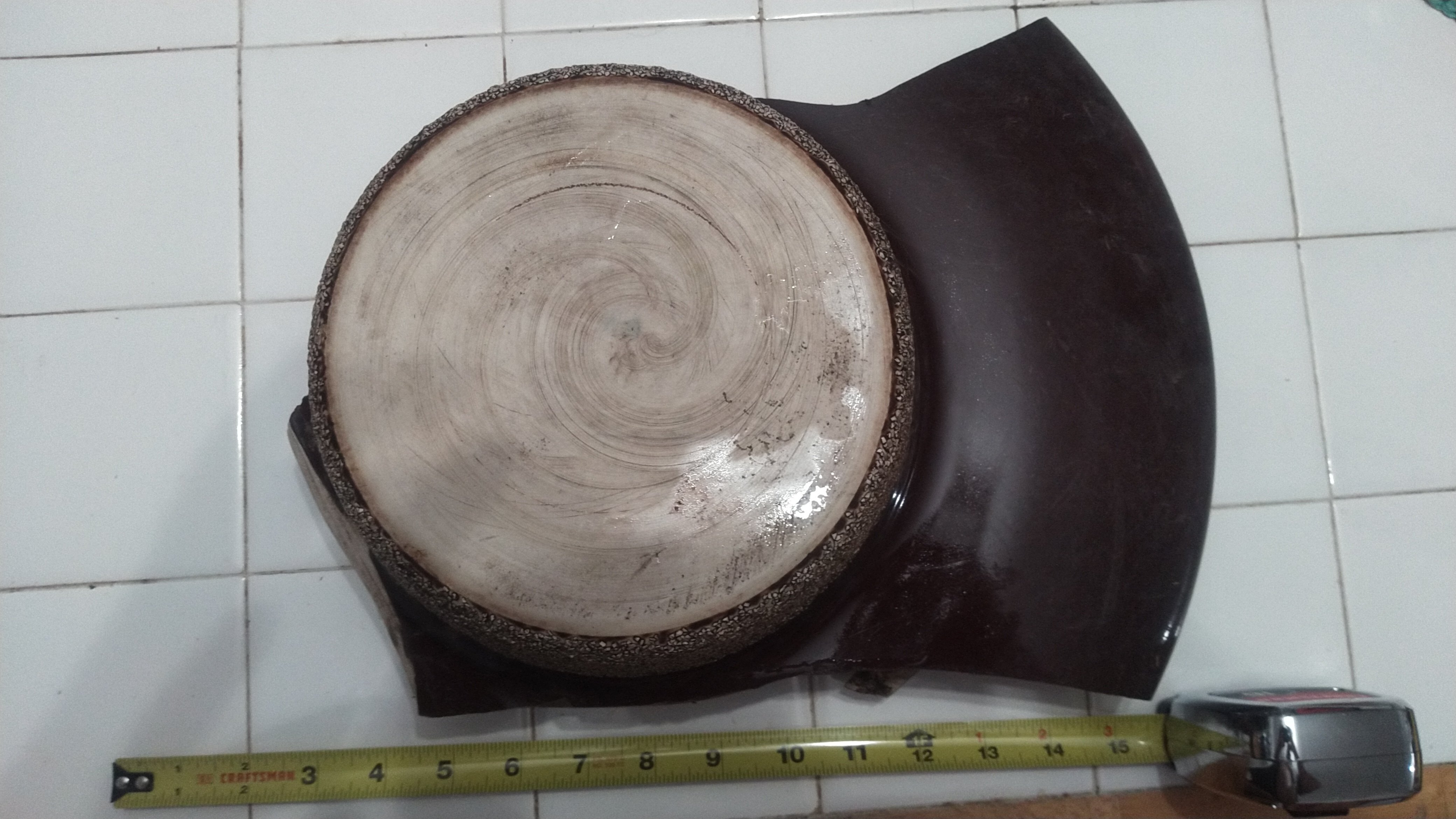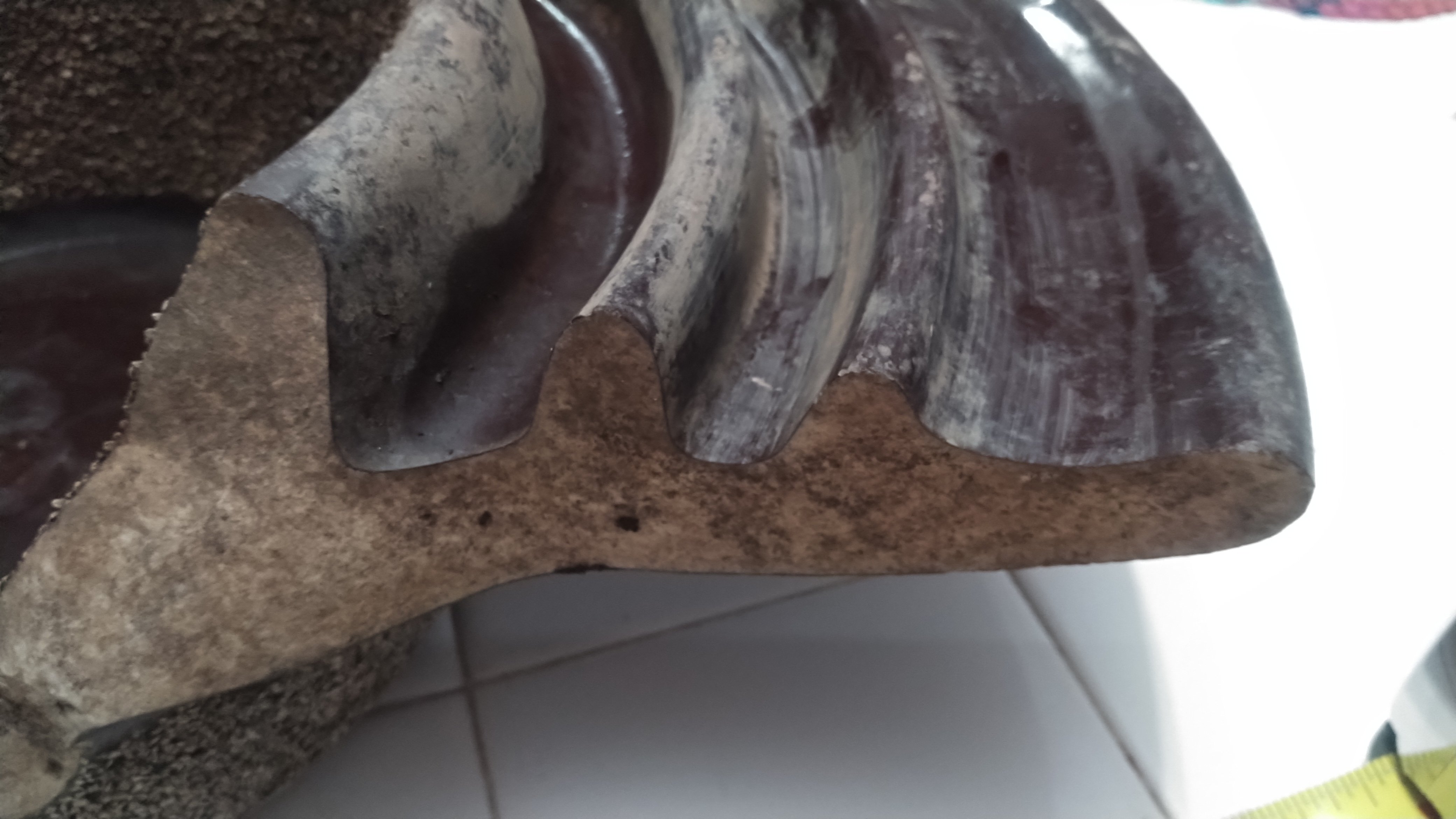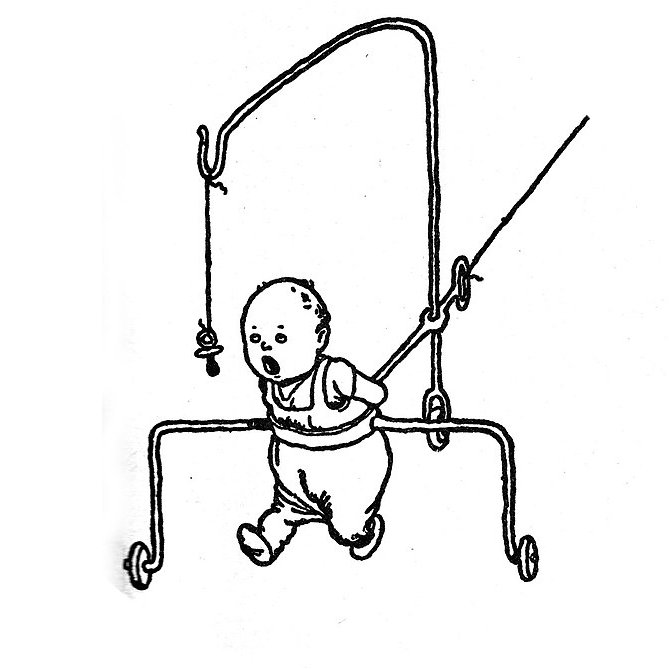Found this broken piece in the creek bank. Southwest Pennsylvania. Farmhouse was built in 1922. Coalmining country.
Would have been about 18" in diameter. There is a rough coating in the glaze on the inside and outside of the bowl section. Abrasive enough that I figure it served a mechanical purpose. There are three grooves on the rim that aren’t symmetrical to each other.
There might be a makers mark in the center of the glaze inside but I can’t make it out. There is also a light blue/green stain on the bottom that might be a mark.
Any ideas?





The rough (frit) glaze surface would be the opposite of what you want in a HV bushing, because they would wick and store conductive water.
Interestingly it’s on the both the top and the bottom. Perhaps this high surface area makes it more compatible with some specific glues; allowing you to stack a pile of these pieces together to make a full bushing? That might also explain why there is not hole in the middle, this could be a compression style bushing stack for holding wires up in the air off a surface.
I don’t know enough about high voltage to speak with any authority, but that totally sounds reasonable.
As for construction of original insulator, that’s what I’ve decided as well. It’s a stacked assembly. There are smaller versions.
It’s a really big insulator and very possibly could have been used for mining power supply. There are mines within a 1/4 mile.